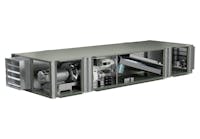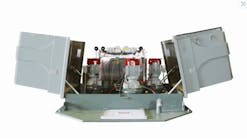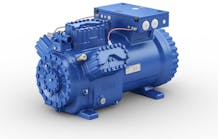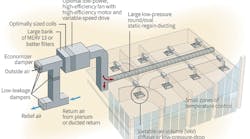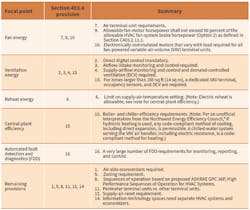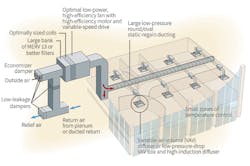The state of Washington has an energy code based on the International Energy Conservation Code. But like many states that adopt model energy codes, Washington tailors its code to meet legislated and unlegislated efficiency goals, as well as local construction practices that take into account climate, natural resources, and more.
Washington’s legislated requirements for energy and emissions reductions are driving aggressive energy-code provisions. One requirement is for the state to return to 1990 emissions levels by 2020 and reduce emissions to 25 percent below 1990 levels by 2035. By 2050, the aim is to reduce emissions to 50 percent below 1990 levels.1 Another requirement is to make incremental changes to the Washington State Energy Code (WSEC) from 2013 through 2030, changes to achieve a 70-percent reduction from the levels in the 2006 edition of the code.1
The WSEC has a three-year cycle, with officials having just completed the 2015 edition. This edition includes a provision mandating the use of decentralized ventilation in the form of a dedicated outdoor-air system (DOAS) for delivery of 100 percent outside air independent of heating and cooling systems. This provision, Section C403.6, is limited to five types of non-residential buildings: fire stations, education, offices, libraries, and retail.
The code language does not require any particular type of heating or cooling system. Zonal systems, such as variable refrigerant flow (VRF), active chilled beams, radiant systems, and ductless heat pumps, would comply.
The provision is in effect voluntarily until July 1, 2017. After that, it will be mandatory. This article provides an overview of the provision and an important exemption for high-efficiency variable-air-volume (HEVAV) systems.
Exemptions
Buildings that are ventilated only naturally are exempt from the provision, as are buildings that have HEVAV systems.2 An “impracticality clause” allows a code official to determine that full compliance with all of the requirements of the DOAS provision would be impractical. Impracticalities could arise from unusual uses or unorthodox configurations of buildings. In such cases, the official would construct an approved “alternate means of compliance that achieves a comparable level of energy efficiency” tailored to the circumstance.2
The HEVAV Exemption
The section of the code exempting HEVAV systems, which integrate heating, cooling, and ventilation, contains 16 sections, many of which have subsections and sub-subsections, and a total of 48 individual requirements. Many of the requirements align with Air Movement and Control Association (AMCA) International’s definition of a high-performance air system.
A training session provided by the Northwest Energy Efficiency Council (NEEC)3 has a useful summary of the key elements of the HEVAV provision. NEEC summarizes the provision by identifying five key focal points: fan energy, ventilation energy, reheat energy, central-plant efficiency, and fault detection and diagnostics.
Table 1 summarizes the 16 main provisions according to the five key focal points. The items not covered in the NEEC list are summarized as “remaining provisions.”
High-Performance Air Systems
The AMCA High Performance Air Systems (HPAS) Task Force identifies high-performance air systems as “us(ing) a modern design approach with leading products and technology to optimize energy efficiency, comfort, and indoor-air quality.”4
Further:
“HPAS design integrates the strategies of right-sizing, zone optimization and outside-air-based free cooling. [HPASs] also minimize static pressure, system leakage and system effects. HPAS technologies include high efficiency fans, outside air economizers, low-leakage dampers and ducts, low pressure-drop components, diagnostic sensors and digital controls.”4
Because they integrate heating/cooling with outdoor-air ventilation, HPAS can have installed costs nearly half those of ductless systems, which have first costs associated with both heating/cooling and ventilation. A HPAS is depicted in Figure 1.4
Conclusion
With codes changing at an aggressive pace, new approaches to old strategies may be required. The qualities AMCA ascribes to HPAS align well with the requirements of a high-efficiency VAV system defined by the WSEC. One thing is certain: Choosing high-efficiency systems improve comfort, health, energy use, and sustainability and lowers costs.
References
- Weed, R. (2010). 2011 strategic plan for enhancing energy efficiency and reducing greenhouse gas emissions from homes, buildings, districts and neighborhoods. Olympia, WA: Washington State Department of Commerce.
- Washington State Legislature. (n.d.). WAC 51-11C-40360. Retrieved July 7, 2016, from http://tinyurl.com/WashingtonStateSectionC403-6
- Lewellen, D. (2016). 2015 Washington state energy code: Commercial update. Seattle: Northwest Energy Efficiency Council.
- AMCA. (2016). High-performance air systems. Retrieved July 8, 2016, from www.amca.org/whitepapers


